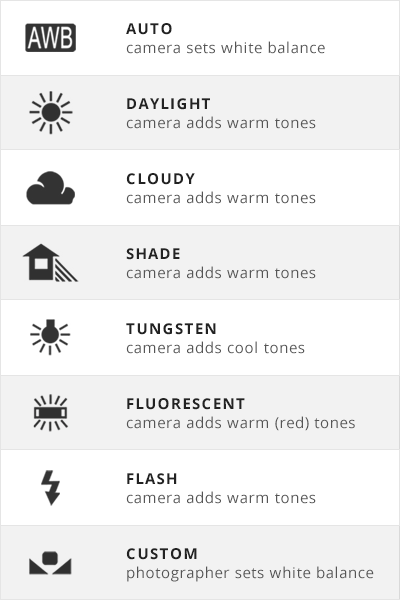Understanding White Balance
In aesthetic medicine and clinical trials ensuring a patient's skin is a consistent color from session to session is essential. Quantifying melanin, inflammation, vascular lesions and other dermatologic conditions can be compromised if you cannot ensure a patient's skin is a consistent color from session to session. The chief photographic parameter in standardizing the overall hue of a photo is white balance.
 Select a white balance to match the primary light source
Select a white balance to match the primary light source
Using the correct white balance (WB) ensures that a piece of white paper will be white when photographed under the sun, incandescent, fluorescent or other forms of light. The WB should be set to match the primary light source in a photo. When using the flash, always select a flash white balance. If shooting w/o a flash, set the WB to match the room lighting. In some cases, a custom WB will yield the best color fidelity. For the best, most consistent color fidelity using a flash is recommended.
Cameras typically employ icons representing different WB's. Each of these icons corresponds to a specific Kelvin color temperature. For instance, a Daylight color temperature is typically ~5000 Kelvin. More advanced cameras will allow for the use of Kelvin color temperatures.
Relying on Auto WB is never a good option as there will be more variation from time point to time point than is acceptable. Auto WB is not a set number like the other presets but is based on the camera's evaluation of the scene. This evaluation is influenced by environmental factors like ambient light intensity, and colors in the scene.
Taking control of WB will help you take control of your clinical photography.
